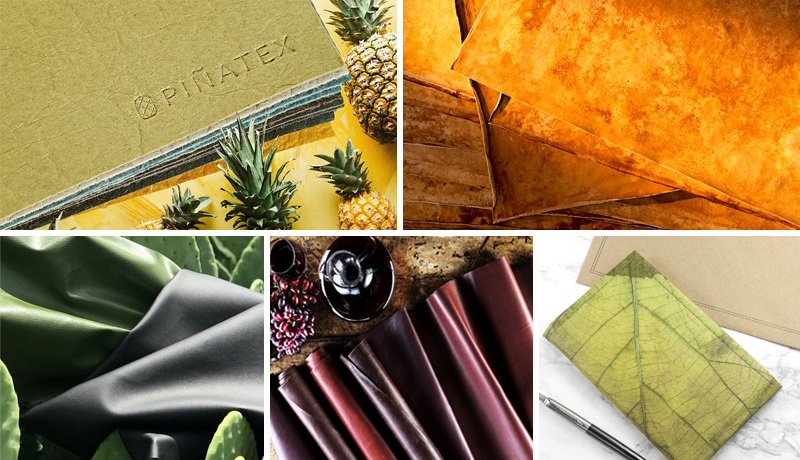Animal leather is the years old staple of the luxury industry as a whole. But we are coming to realise that now, more than ever, we must comply with the United Nations Sustainable Development Goal (SDG 15) which emphasizes restoration of ecosystems and safeguarding diversity. If we do not act on it now, in years to come, there will be no environment left!
Thankfully, many innovators, environmentalists, and experts have been working on more plant-based alternatives to animal leather which are equally sturdy but not harmful. To sum up the explanation quickly, animal leather goods consume a lot of resources such as huge amounts of water, feed for raising livestock, land, heavy machinery etc. The by-product of industries that make animal leather is Methane which is a greenhouse gas. It harms the local communities, and its side effects are realised gradually. Animals are butchered in ways that are unimaginable to us humans. Also no, our usual animal leather is not natural because a significant amount of tanning is required for it to be marketable and sculpted into wearable products. Tanning agents (formaldehyde being the most common) are carcinogenic in nature and make the leather potentially unsafe. This leather all-in-all is never biodegradable despite being made from animal skin because it is already loaded with a lot of chemicals. The end of any animal leather product life cycle is being worn out, eventually ending up in a dumpster or a landfill for the worst. It cannot be recycled, and it is incredibly tough to upcycle or reuse in any way.
Not that using vegan and faux leather as alternatives will reduce global warming, climate change, and pollution or stop animal abuse at once, but it could be a step into a systemic change of sorts – an animal friendly environmental revolution, which would eventually help all of us. Therefore, choosing products made from a 100% organic material which doesn’t cause any damage to the environment, or its residents is relatively better.
To start from somewhere, here are 5 animal leather alternatives which are making waves globally and hopefully will be available soon for commercial purposes in the South Asian market.
Mushroom Leather (Mylo)
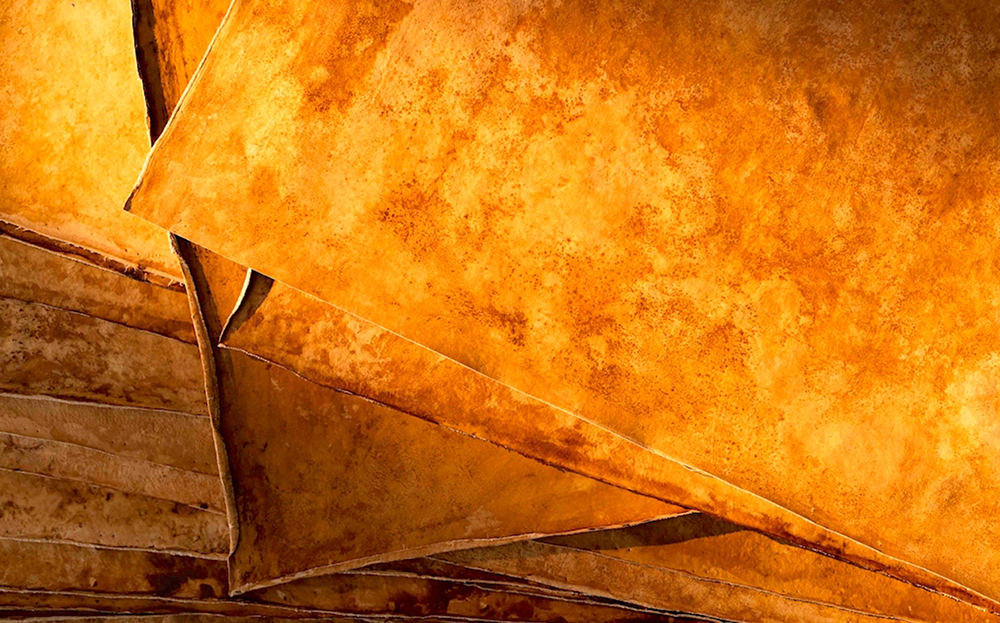
Mushroom leather (Muskin) is one of the best-known vegan leathers which has quickly gained popularity. It is by far the most used vegan leather in the luxury circuit. The basic building block of mushroom leather is Mycelium which is basically the root structure of mushroom. It grows as tiny threads forming a very small forest type strata on the ground. Mycelium is the vegetative part of the mushroom. Mushroom, which are fungi, absorb nutrients from the environment through this network. It can be grown quickly and moulded into desirable shapes. It is also waterproof, feels like cowhide leather, and is super skin-friendly. A company by the name Bolt Threads developed Mylo, mushroom alternative to leather, which will be available worldwide through various partners starting from 2022. In the latest news, sustainable fashion champion and designer Stella McCartney made a Mylo prototype of her Falabella bag for the Victoria and Albert Museum’s “Fashioned From Nature” exhibit in 2018 and personally invested in this company. And in March 2021 she gave the industry its first-ever Mylo garments: a jet-black bustier and utility pants.
Pineapple Leather
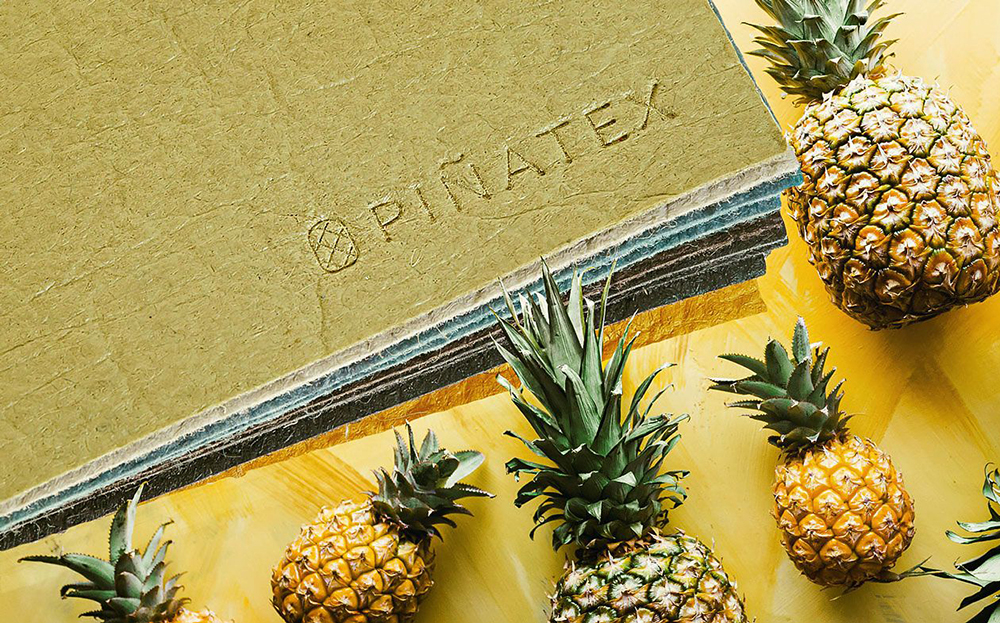
Pineapple leather or Piñatex comes next in popularity and use. It has been in the run a bit longer than mushroom leather. Developed by Carmen Hijosa, the founder of the textile company Ananas Anam, Piñatex is made from fibres of pineapple leaves grown in the Philippines. It is a basically a fruit by-product and PETA approved which makes it the perfect choice for designers who like to go with sustainable, sturdy vegan leather. The leaves are made into mush like material after delicately separating the fibres and then locally processed in Philippines itself before being shipped abroad. The output of the entire process is biogas and natural plant waste; helpful to the local farmer communities. Piñatex has been in use for more than 5 years now by various fashion brands such as Po-Zu, Vegatar, and H&M, to name a few. Recently Nike and the famous Dutch footwear brand Mercer Amsterdam launched a new “Happy Pineapple Line” featuring five different shoes in different colours made from Pinatex and a vegan range of shoes named “The W3RD”, respectively.
Leaf Leather
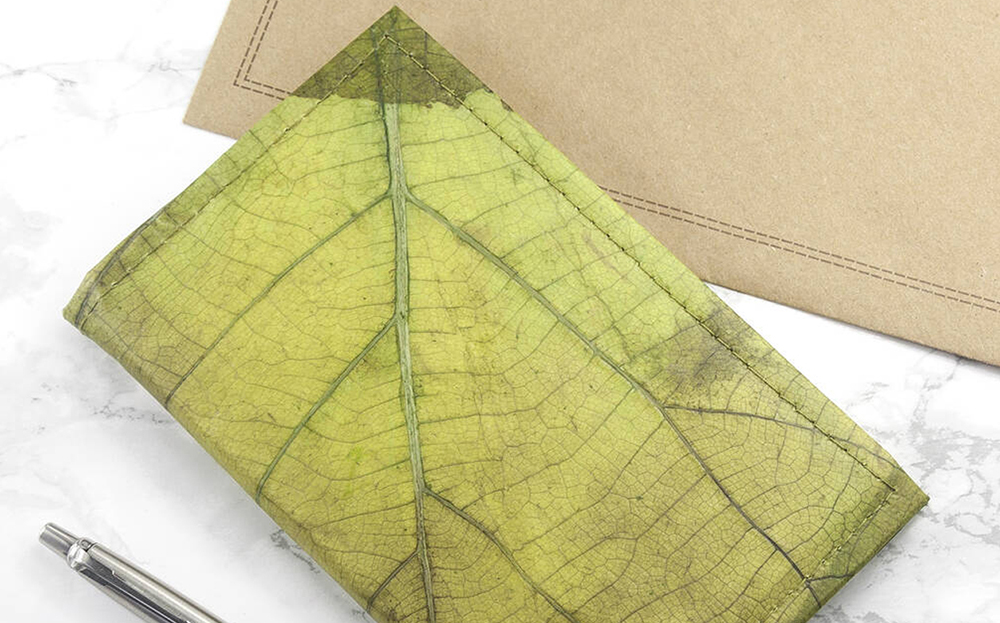
Leaf leather is directly made from the fallen teak tree leaves, a rather innovative and environmentally conscious effort. It is also as durable and strong as animal leather. No trees or plants are harmed in the entire process. Being huge in size, teak leaves are soaked in water, dyed, arranged flat together and dried. This process bonds the leaves and provides a large sheet of the leaf material. This leaf material is then blended with organic cotton fabric for a strong, soft structure. When crafted into leather, the natural leaf design is automatically present on the product, without any aesthetic effort. The entire process is a traditional and handmade from Thailand by a company called The Tree Tribe. They recently launched their “Tree Tribe Leaf Leather Collection”. They specialize in wallets and are actively expanding in other areas too. In 2014, Nina Rössler too found Nuvi Releaf, a proprietary plant-based leather made from the teak leaves, found abundantly in the northern countryside of Thailand.
Wine Leather
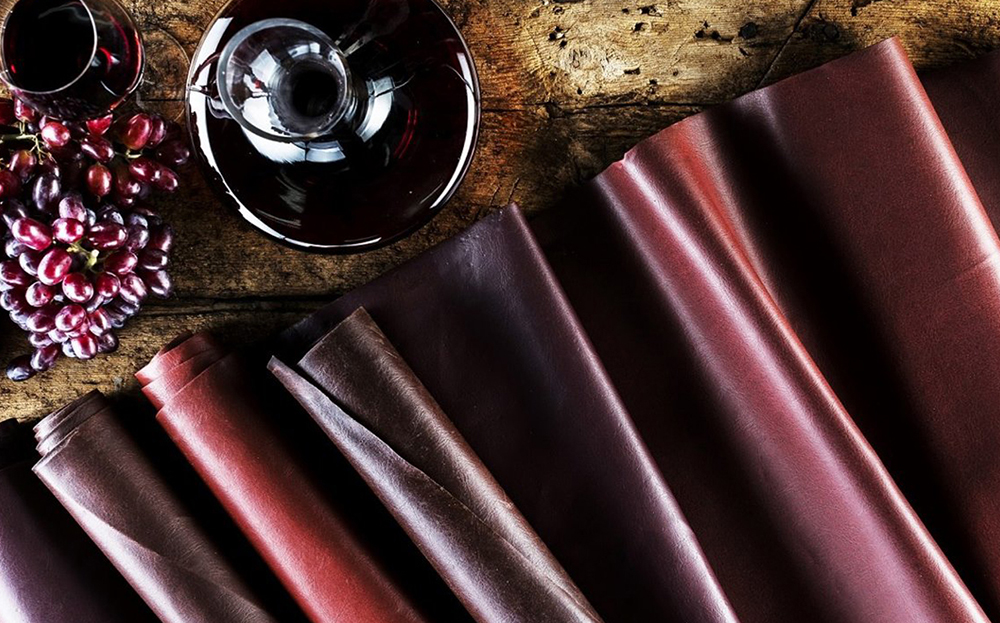
Wine leather, also known as grape leather, is made by Vegea, an Italian technology company, established by architect Gianpiero Tessitore. It is a 100% recyclable, vegan leather primarily catering to the Italian fashion industry. This leather is silky soft and smooth and can be recycled. The main ingredient of wine leather are waste products from the Italian wine production – core and shell, which are processed through a chemical process developed by Vegea, resulting in its base. It is further put through their in-house patented methods. Amazingly, the entire production cycle never uses additional water. Also, its luscious Burgundy colour is 100% natural – the absolute grape colour! In 2019, Bentley chose Vegea to provide sustainable interiors for their new EXP 100 GT model.
Cactus Leather
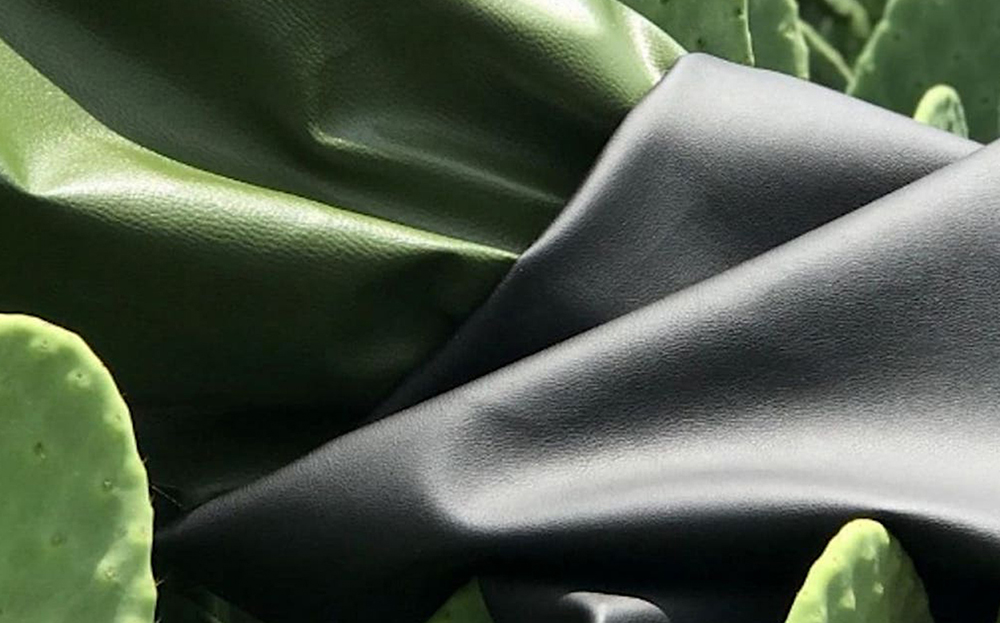
Adrian Lopez Velarde and Marte Cazarez from Mexico came together to create this organic leather alternative from prickly pear cactus. It has the highest potential of replacing animal leather because of the lowest carbon footprint when compared with other available alternatives. The duo debuted Desserto to the world at the International Leather Fair Lineapelle in Milan, Italy, in 2017. The process involves using either the new young leaves or the mature leaves of the prickly pear cactus. These leaves are then cleaned, mashed, and left in the sun to dry for three days before being processed. Cutting off the leaves does not stunt growth of the plant and are successfully regenerated within months. In 2021 alone, fashion and watch brand Fossil launched its first product line made from Desserto cactus leather; the Karl Lagerfeld brand and actress Amber Valletta collaborated to release an eco-friendly accessory collection made with Desserto cactus leather; and H&M partnered with them for their “Science Story Collection”, advocating a future of sustainable fashion by 2030.

